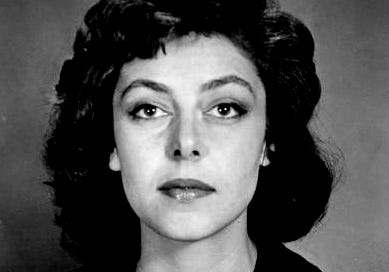My latest feature at CrimeReads is up, and it’s one I’ve been itching to write for years. I’ve been an Elaine May fan since I first saw A New Leaf (1971), her pitch-black comedy that turns a classic noir premise on its head. Eventually it dawned on me that almost all of May’s movies—yes, even Ishtar (1987)—are crime stories of one form or another, which shouldn’t be a surprise given her family history. I talk about that upbringing and the films that resulted, particularly Mikey and Nicky (1976), in the article.
A spur to my tackling the piece is the publication of the biography that May has long deserved. Carrie Courogen’s Miss May Does Not Exist: The Life and Work of Elaine May, Hollywood’s Hidden Genius (June 2024) achieves the nigh-on impossible, in that it does justice to every facet of its subject’s protean career. It’s scrupulously researched, ruthlessly honest, and consistently funny. Courogen calls the book “a love story about difficult women, the prickly broads who are not always easy to work with or easy to love, but inhabit their full humanity anyway.” She regularly circles back to the powerful central point that May’s male collaborators like Mike Nichols and Warren Beatty also took deliberate approaches to their filmmaking, but only May was branded a problem. It’s delightful to think that with this volume and Mark Harris’s magisterial Mike Nichols: A Life (2021), Nichols and May have been reunited on bookshelves.
May was a trailblazer in improvisational comedy. My interest in her indirectly sparked my own improv experiment. I was struck by this observation from Courogen:
The first rule of improv—a rule Elaine invented—is acceptance. If I say you’re a duck, you’re a duck. Fighting the idea doesn’t make the scene any better, it just sinks it all. You don’t have to like the setup, but you have to go with it. You can’t control it or change it. The only thing you can do is elevate it.
More than once, I’ve heard improv compared to a religion. With the simple combination that Courogen describes, acceptance and elevation, I finally understand why.
To mark the article’s publication, I will again tell my Elaine May story. Please note that it is not much of a story, and Miss May does not appear in it.
Late 2016: Rosemarie and I are trudging through SeaTac Airport when we pass a limo driver holding a sign that reads Elaine May. Sure, he could be waiting for some other Elaine May. But it could easily be the Elaine May, because Amazon has just launched the misbegotten miniseries Crisis in Six Scenes, in which she stars opposite Woody Allen and Miley Cyrus—no, it is real, look it up—so theoretically she could be coming to Seattle. We loiter near the driver, waiting to see. The problem is we have staggered off a flight from Tampa, one of the longest hauls you can make in the lower 48, and are dead on our feet. Not ideal conditions in which to express my longstanding love of A New Leaf. Additionally, as Rosemarie points out, if it is the Elaine May, she’s likely flying in from New York, and the last thing an octogenarian completing a transcontinental trip wants to be greeted by is an addled admirer sputtering Ishtar dialogue before either party has had a chance to remove their inflatable neck pillows.
By now the driver is eyeballing us, so we stumble on toward the exit. I regret not sticking around a little longer, just for a glimpse of one of my heroes. Again, check out the CrimeReads feature.
What I’m Reading
The boys are at it again. Ethan Iverson considers a pair of blue-collar action films—Alligator (1980) and Unstoppable (2010)—and uses them as a sly feint to get into politics. And Ray Banks turns his ever-sharp eye to a movie that means a lot to me: 1979’s Going in Style, which was shot in my Queens neighborhood when I was a kid. My mother and I were returning from the supermarket when we stumbled onto the crew setting up, and she gave me permission to hang around as long as I didn’t get underfoot. I watched them shoot take after take of a single scene—George Burns throwing up a hand to stop a battered van, Art Carney and Lee Strasberg marching dapperly behind him. Ray uses that very image in his piece. Grade-school me is standing on the other side of the camera. The movie’s great, too.





I've never watched May's films but now I'll have to take a look. I did admire her performance in that one Woody Allen she did